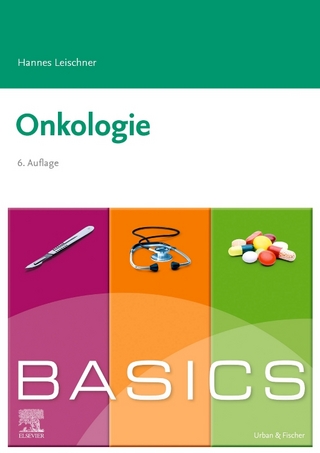
Thyroid Cancer and Nuclear Accidents
Academic Press Inc (Verlag)
978-0-12-812768-1 (ISBN)
The book explains what has been learned from both accidents in relation to prevention of thyroid cancer following nuclear power plant accidents. The book encompasses topics such as risk estimations of thyroid cancer following nuclear accidents and clinical aspects after those specific situations. Additionally, it discusses in detail the reports from Fukushima related to thyroid cancer in the population. This book is a valuable resource for oncologists and biomedical researchers with interest in nuclear accidents and cancer cases.
Shunichi Yamashita graduated from Nagasaki University School of Medicine in March 1978 and spent almost three years from July 1984 to March 1987 as an endocrine research fellow at the Cedars-Sinai Medical Center. In 1990, Dr. Yamashita became a full Professor of Molecular Medicine and International Radiation Health at the Atomic Bomb Disease Institute, Nagasaki University School of Medicine. He has been deeply involved in Chernobyl and Semipalatinsk medical aid projects for more than 25 years. Professor Yamashita is the Adviser to the Governor of Fukushima Prefecture on Health Risk Management. He was dispatched from Nagasaki University to Fukushima since the Fukushima Nuclear Accident and assumed the position of Director of Radiation Medical Science Center for the Fukushima Health Management Survey. In April 2013 Professor Yamashita returned officially to Nagasaki University as the Trustee and Vice-President. Currently he serves as Senior Director of the FMU Radiation Medical Science Center. He was the former President of the Japan Thyroid Association and also a council member of the Asia & Oceania Thyroid Association, and Director of the WHO collaborating center for research on Radiation Emergency Medical Preparedness and Response Network. He is also the member of Science Council of Japan Gerry Thomas is Professor of Molecular Pathology at Imperial College and is committed to developing infrastructures for research into molecular mechanisms of cancer. She strongly believes that public involvement and information is a key part of academic research, and is actively involved in the public communication of research, particularly with respect to radiation protection and biobanking. She has carried out research into the health effects of the Chernobyl accident since 1992, and established the Chernobyl Tissue Bank (CTB: www.chernobyltissuebank.com) in 1998. The CTB has provided infrastructural support (both physical and ethical) in Belarus, Ukraine and Russia for thyroid cancer diagnosis and research into the molecular mechanisms that underlie the increase in thyroid cancer seen after the Chernobyl accident. The project provides a platform for a systems biology approach to exploring these mechanisms and supports tissue collection for international epidemiology studies. Gerry has published extensively on the molecular pathology of thyroid cancer, and is an author of a number of reviews of the health effects of radiation exposure following nuclear accidents. Following the Fukushima accident, she was asked to explain the health risks of radiation on both broadcast and written media in the UK and internationally.
Part I: Overview: Keynote Lectures1. Thirty Years After Chernobyl—Overview of the Risks of Thyroid Cancer, Based Upon the UNSCEAR Scientific Reports (2008–2012)2. Thirty Years After the Chernobyl Nuclear Power Plant Accident: Contribution From Japan—“Confirming the Increase of Childhood Thyroid Cancer3. From Chernobyl to Fukushima and Beyond—A Focus on Thyroid Cancer4. Reassessing the Capability to Attribute Pediatric Thyroid Cancer to Radiation Exposure: The FHMS Experience
Part II: Chernobyl + 305. Post-Chernobyl Pediatric Papillary Thyroid Carcinoma in Belarus: Histopathological Features, Treatment Strategy, and Long-Term Outcome6. Clinical Aspects of Pediatric Thyroid Cancer and Follow-Up of Patients in Belarus Following the Chernobyl Accident7. Long-Term Analysis of the Incidence and Histopathology of Thyroid Cancer in Ukraine in Adult Patients Who Were Children and Adolescents at the Time of the Chernobyl Accident8. Thyroid Cancer Risk in Ukraine Following the Chernobyl Accident (The Ukrainian–American Cohort Thyroid Study)9. Results of the Thyroid Cancer Epidemiological Survey in Russia Following the Chernobyl Accident10. Influence of Radiation Exposure and Ultrasound Screening on the Clinical Behavior of Papillary Thyroid Carcinoma in Young Patients11. Results of Treatment in Children and Adolescents With Differentiated Thyroid Carcinoma Not Exposed and Exposed to Radiation From the Chernobyl Accident12. Somatic Genomics of Childhood Thyroid Cancer
Part III: Fukushima + 513. A Review of Studies on Thyroid Dose Estimation After the Fukushima Accident14. Five-Year Interim Report of Thyroid Ultrasound Examinations in the Fukushima Health Management Survey15. The Features of Childhood and Adolescent Thyroid Cancer After the Fukushima Nuclear Power Plant Accident16. Psychosocial Impact of the Thyroid Examination of the Fukushima Health Management Survey17. Thyroid Cancer Screening and Overdiagnosis in Korea18. Management of Papillary Thyroid Carcinoma in Japan
Part IV: International Report19. UNSCEAR Activities Related to the 2011 Fukushima-Daiichi Nuclear Power Station Accident20. The Radiological Consequences of the Fukushima Dai’ichi NPP Accident: Estimates From the Group of Experts Convened by the International Atomic Energy Agency
| Erscheinungsdatum | 23.04.2017 |
|---|---|
| Verlagsort | San Diego |
| Sprache | englisch |
| Maße | 152 x 229 mm |
| Gewicht | 410 g |
| Themenwelt | Medizin / Pharmazie ► Medizinische Fachgebiete ► Onkologie |
| ISBN-10 | 0-12-812768-6 / 0128127686 |
| ISBN-13 | 978-0-12-812768-1 / 9780128127681 |
| Zustand | Neuware |
| Haben Sie eine Frage zum Produkt? |
aus dem Bereich


